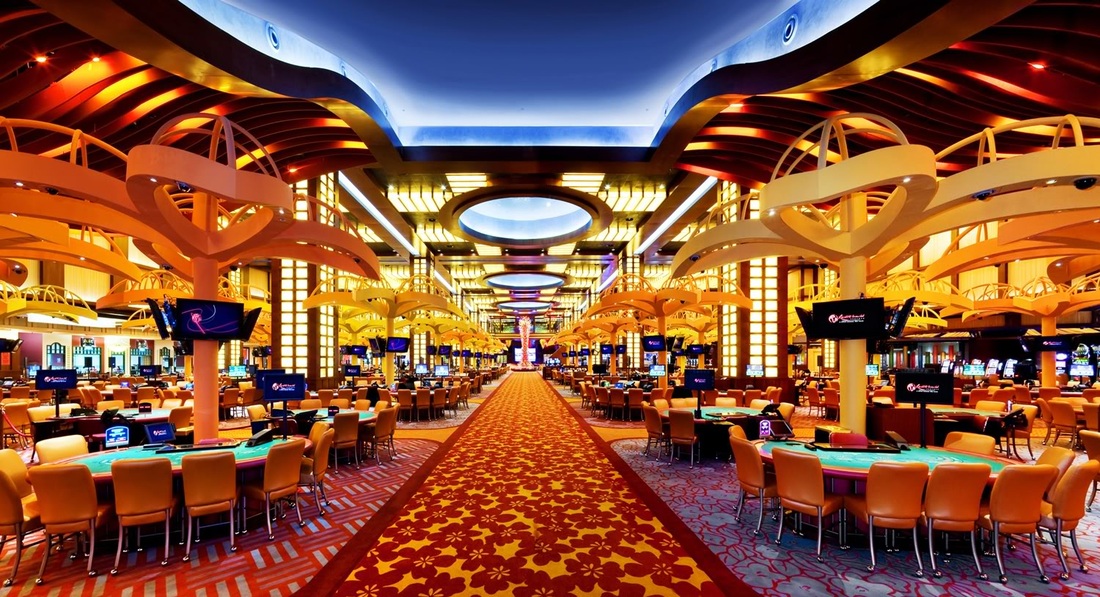Casino games have long captivated the human imagination, drawing players into a universe filled with luck, strategy, and the allure of thrill. Each game is meticulously crafted not just for enjoyment, but also to elicit particular emotional responses that keep participants engaged and invested. Understanding the motivations behind these designs reveals much about how behavioral psychology plays a vital role in the gaming experience. RR88
From the bright lights and dynamic sounds to the intricate layering of systems and payoffs, casino games are designed to create an atmosphere of excitement and anticipation. Game designers leverage psychological principles to influence gambler behavior, whether through the use of winning opportunities, almost wins, or community engagement. By examining these factors, we can better appreciate how casino games fulfill not just a desire for entertainment, but deeper psychological needs for thrill and uncertainty.

Understanding Player Actions
Casino games are engineered with a profound comprehension of player psychology, which is essential for luring and holding players. The excitement of the game, alongside the expectation of winning, establishes a powerful allure. Game designers employ elements like sonic elements, vibrant graphics, and engaging gameplay to capture attention and evoke emotional responses. These sensory elements enhance the overall experience, making players feel more involved in the game.
Another significant aspect of player behavior is the notion of risk/reward dynamics. Casino games often manage high-risk scenarios with the potential for considerable rewards, which can cause the event known as near-miss effect. When players come near to winning, the brain releases dopamine, bolstering their behavior and motivating them to persist playing in pursuit of that hard-to-reach win. This cycle of wish and disappointment plays a key role in how games are designed and advertised.
Lastly, social elements also play a critical role in player behavior at casinos. Many games are crafted to be played in groups or in company with other players, nurturing a sense of belonging and collective experience. The social interaction inherent in games like blackjack enhances enjoyment and can culminate in longer play sessions. Designers capitalize on this by creating environments that invite players to linger, interact, and revisit, making the overall casino experience more appealing.
The Role of Imagery and Sound
Imagery and audio play a vital role in improving the player’s experience within gambling games. Designers utilize bold colors, striking graphics, and captivating animations to attract gambler’s attention and maintain their interest. The use of motifs, such as adventure or opulence, helps create an engaging atmosphere that transports players into a different world. By connecting to the senses, these elements contribute to a intensified emotional response, prompting players to interact more deeply with the games.
Audio design is just as important in reinforcing the overall experience of gambling games. The combination of background music, audio effects for winning combinations, and environmental noises creates an auditory landscape that keeps players enthralled. Audio cues associated with victories, such as chiming bells or celebratory music, evoke feelings of thrill and satisfaction, encouraging players to continue playing. These audio cues are carefully placed to amplify the excitement of the game and create a more engaging experience.
Additionally, the alignment of imagery and sound is essential for supporting the game’s overall concept and atmosphere. Each element should align seamlessly to create a cohesive experience that draws players in. The effective use of this synergy not only enhances user enjoyment but also increases the chances of return play, as players become more engaged in the immersive world that the casino games offer. This thoughtful integration of visuals and audio ultimately enhances player engagement and commitment.
Incentive Systems and Engagement
The design of gambling experiences greatly relies on incentive structures to ensure participants involved and returning for more. These structures are rooted in psychological principles that take advantage of human behavior and desire. Players are often driven by the thrill of success, which is reinforced by instant responses through the game structure’s mechanics. This instant gratification not just improves the overall experience but also cultivates a feeling of achievement, encouraging participants to keep playing in hopes of bigger gains.
Gaming establishments adopt various incentive systems, including jackpots, extra rewards, and increased rewards, to engage participants. These elements create a layer of excitement that sustains engagement. Additionally, the unpredictability of results plays a crucial role in keeping interest. The variable reward system, where successes are random but happen often enough, maintains participants on edge and motivated to keep playing. This loop of anticipation and expectation is essential to the success of casino games.
Furthermore, community aspects, such as tournaments and multiplayer features, enhance the engagement factor by leveraging the desire to compete of participants. The shared experience of gaming with others can intensify the thrill of winning and create a community atmosphere within the gaming space. By integrating these social dynamics with effective reward systems, gambling experiences don’t just offer fun but also foster a deeper connection among participants, reinforcing their commitment to the overall experience.
